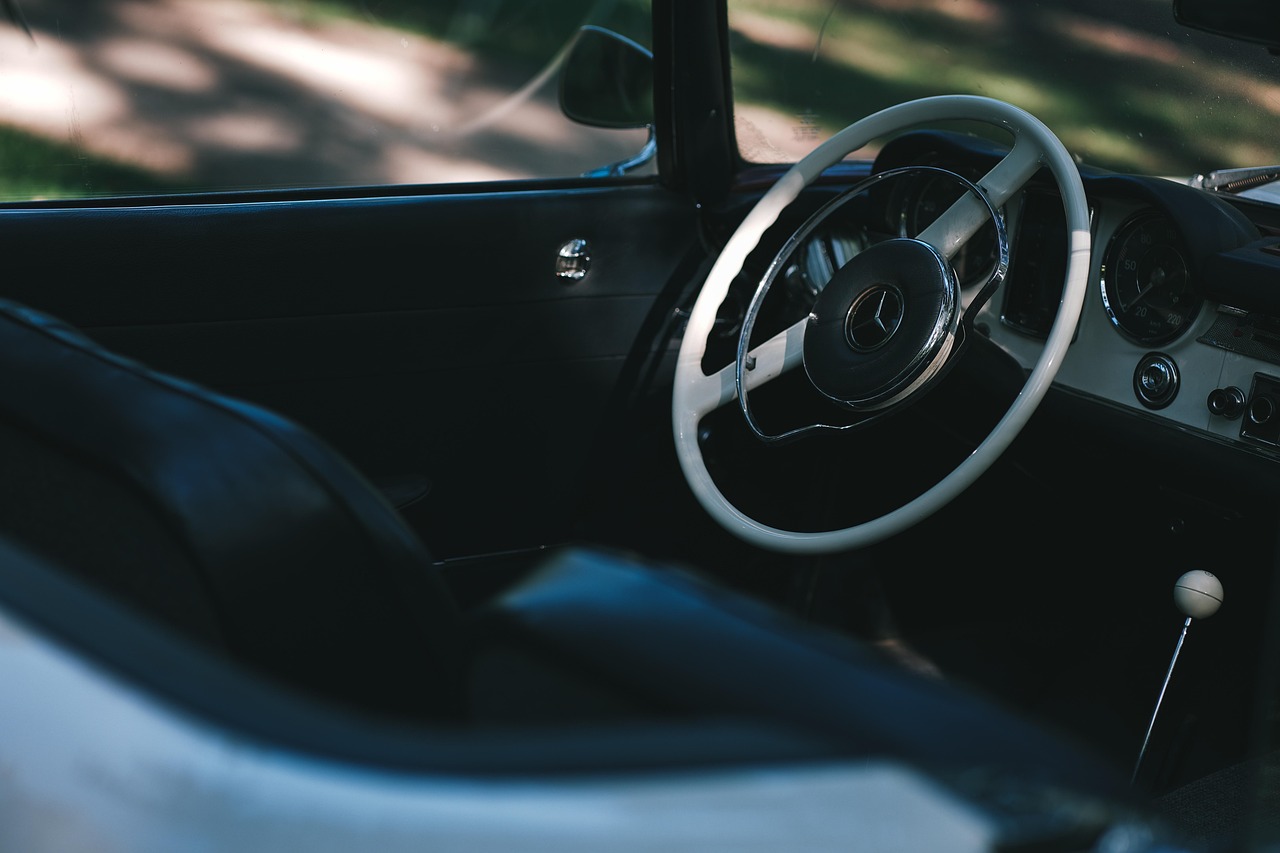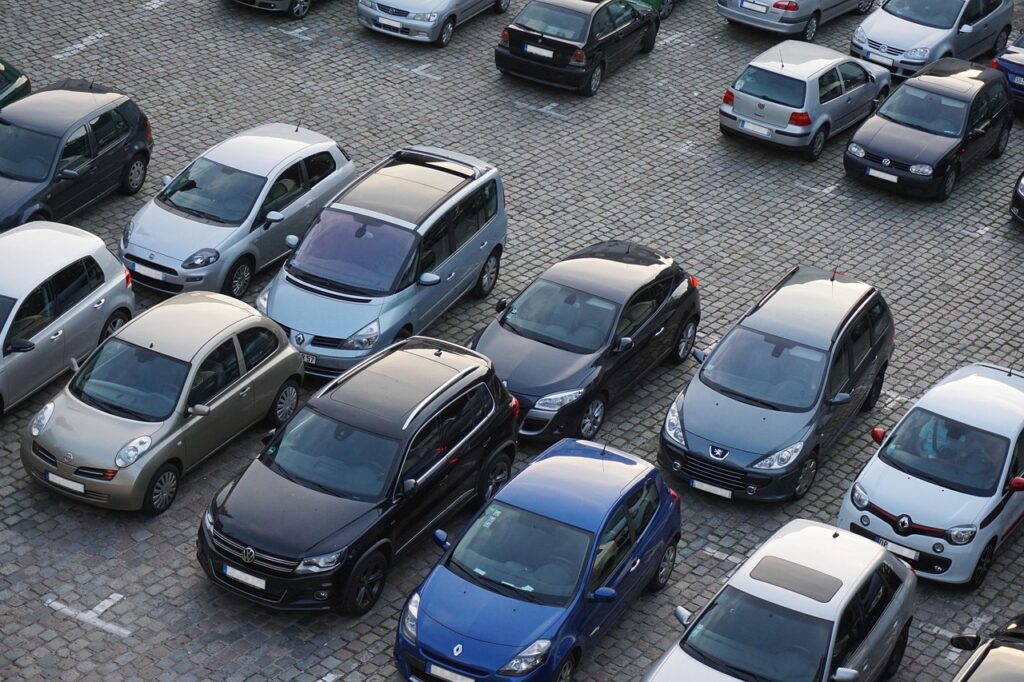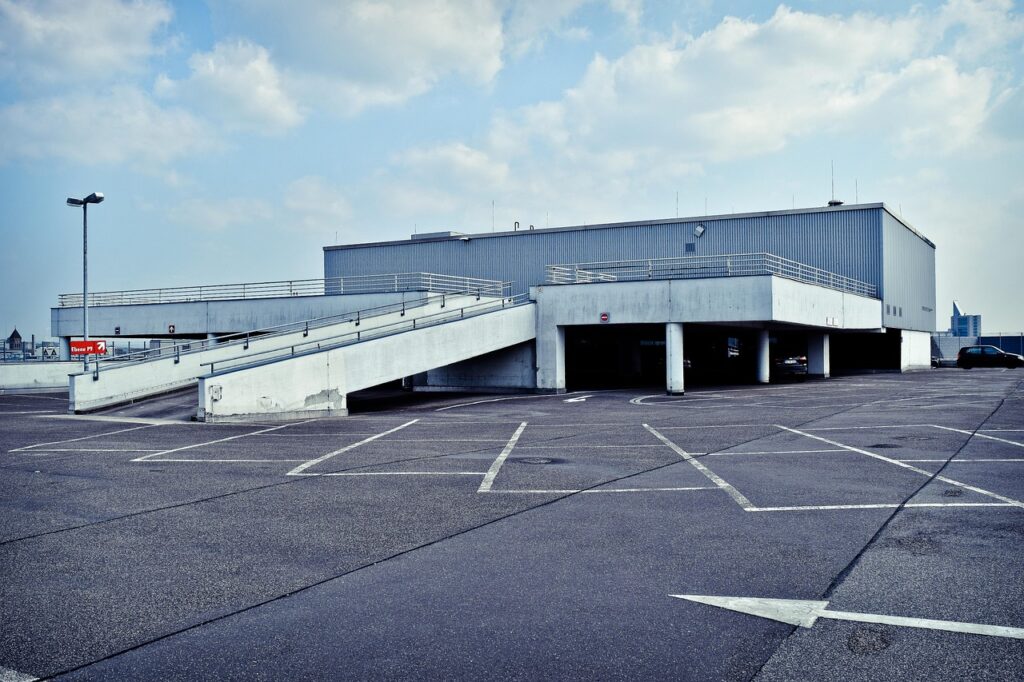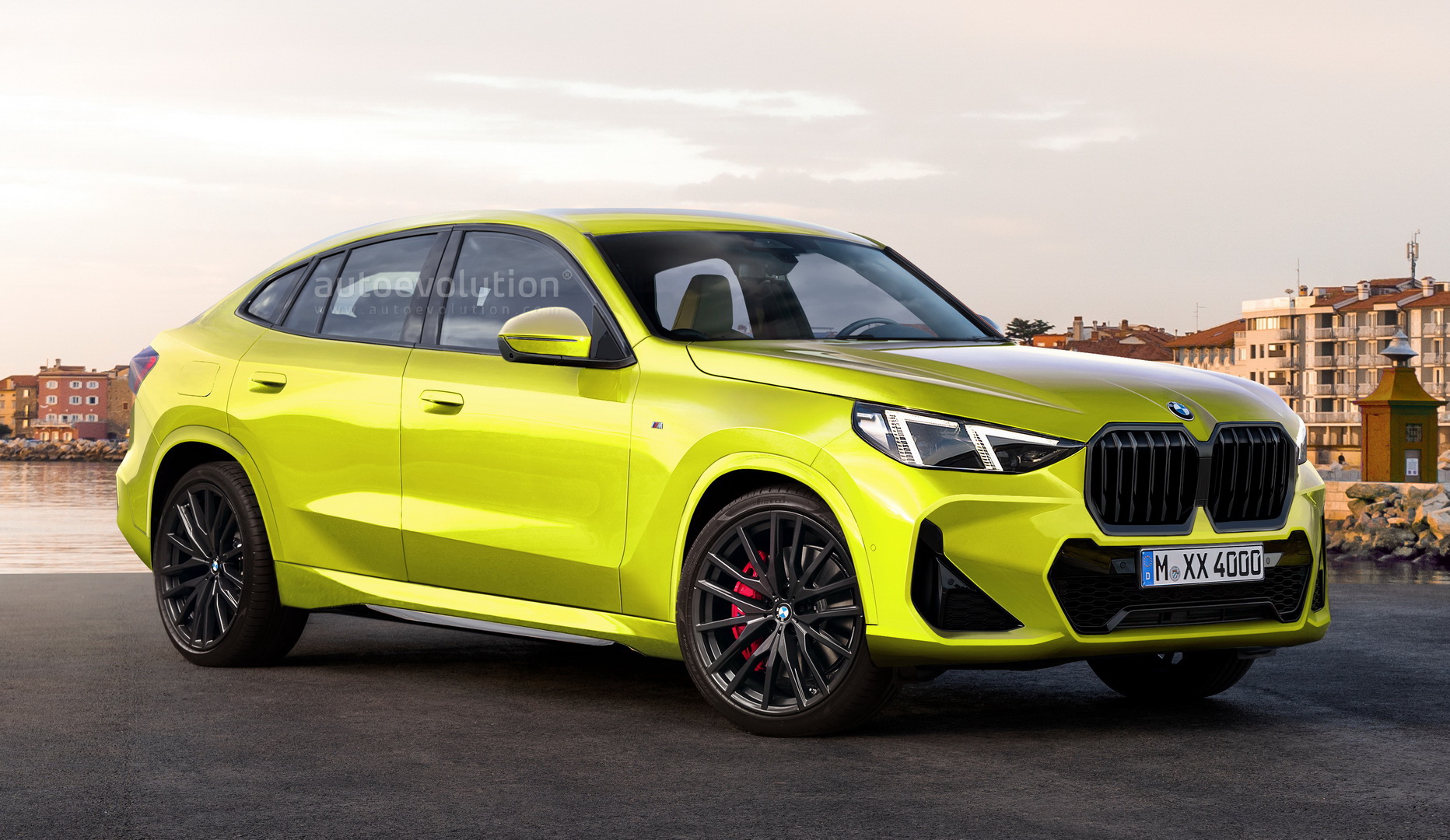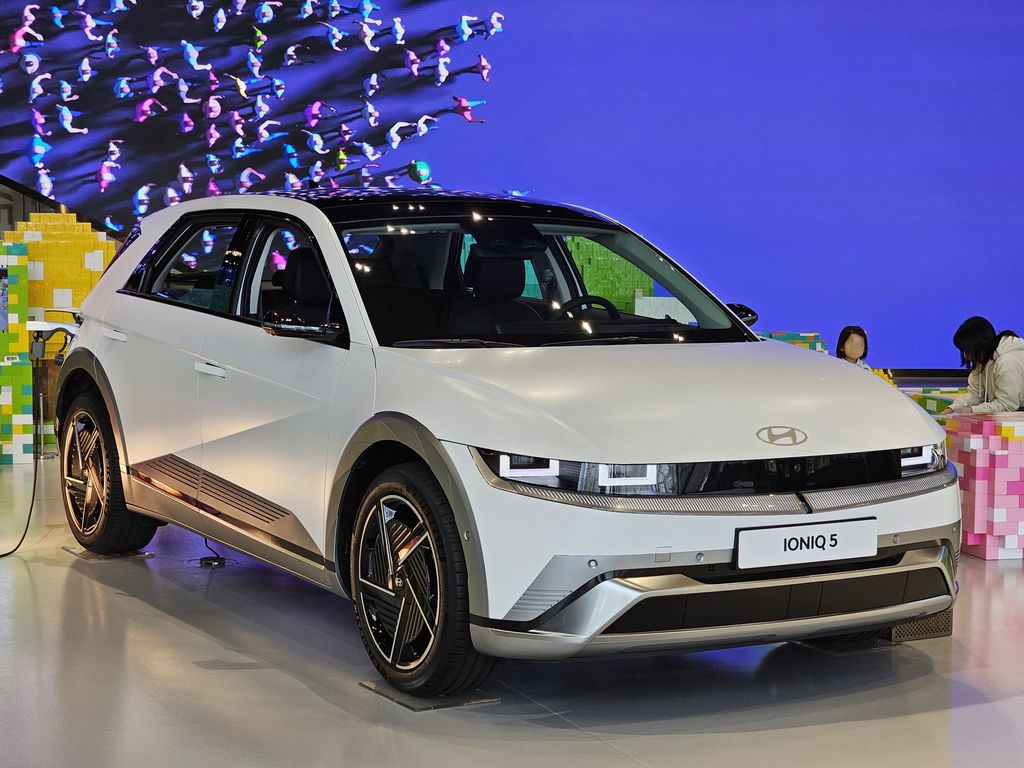
Parking in a tight space can be one of the most nerve-wracking challenges for any driver, whether you’re a seasoned pro or just starting out behind the wheel. The thought of maneuvering your vehicle into a narrow spot, flanked by other cars or obstacles, often brings a mix of anxiety and hesitation. Yet, mastering this skill is essential for everyday driving, especially in crowded urban areas or busy parking lots where space is at a premium.
Successfully parking in a confined area requires a blend of spatial awareness, precision, and confidence. It’s not just about squeezing your car into a spot but doing so safely and efficiently, without causing damage or stress. Understanding the basic principles and developing a systematic approach can transform what once felt like a daunting task into a manageable, even satisfying, routine.
This comprehensive guide aims to equip you with the knowledge and confidence needed to park like a pro, no matter how small the space. From assessing the environment to executing the perfect maneuver, we will explore key strategies and practical tips that will help you approach tight parking spaces with greater ease and security. Let’s delve into the techniques that turn parking dilemmas into driving triumphs.

1. **Strategic Space Selection**Finding an available parking space might seem like the simplest part of the process, but a strategic approach can significantly ease your subsequent maneuvers. For an easier time parking, it is always advisable to look for a parking space with another empty one next to it. This provides a valuable buffer, allowing you to avoid the immediate concern of getting too close to another parked car right from the start of your parking attempt.
However, if the luxury of an adjacent empty space isn’t available, you should select the first empty parking space you find that appears suitable. It is crucial to honestly assess your vehicle’s size in relation to the available space. If you are driving an SUV, a large truck, or an oversized vehicle, you should not attempt to park in a small space. These smaller parking spaces are best limited to smaller vehicles, such as compact cars, where there is adequate clearance.
Attempting to park a large vehicle in a small space runs the risk of bumping into or scraping against another parked vehicle because there is no wiggle room, so to speak. Prioritizing a suitable space that accommodates your vehicle’s dimensions can prevent damage and reduce stress. A quick visual assessment of the space before committing can save you a great deal of trouble and potential expense, ensuring a smoother parking experience overall.
Read more about: Beyond Gold: Unveiling the Next Generation of Wealth-Building Opportunities in High-Growth Sectors and Alternative Investments
2. **Pre-Maneuver Setup**Before you even begin to turn your wheel into a tight space, a thorough pre-maneuver setup is critical for safety and precision. The first step involves positioning your vehicle correctly relative to the chosen spot. You should stop your vehicle with its bumper lined up with the middle of the parking space immediately before the one you will be parking in. This initial alignment provides the optimal starting point for your turn.
Next, communication with other drivers on the road is paramount. Flip on your turn signal to let them know that you are about to park. When other drivers are aware of your intention, they can anticipate your movements, stop, and give you the necessary space to safely park your vehicle. This simple action can prevent misunderstandings and potential collisions, creating a safer environment for everyone.
Even though you are not reversing for a forward pull-in, it is a good idea to check your mirrors before pulling into the parking space. You want to be sure that any vehicles behind you have stopped and are yielding to your parking attempt. If you observe a vehicle trying to pass you, it is always best practice to wait until it has safely passed before proceeding to park. Patience in these moments is a virtue that prevents rushed decisions and accidents.
Finally, an often-overlooked but highly effective tip for tight spaces, especially for vehicles with folding mirrors, is to fold them in. Once you have checked your mirrors as described in the previous step, if you have folding mirrors it is a good idea to fold in both the driver and passenger side mirrors before pulling into the parking space. In small parking spaces, vehicles parked next to one another run the risk of having the driver and/or passenger mirrors bump one another. Folding your driver and passenger side mirrors in will protect them from being broken off by other vehicles whose drivers might not park as carefully as you.
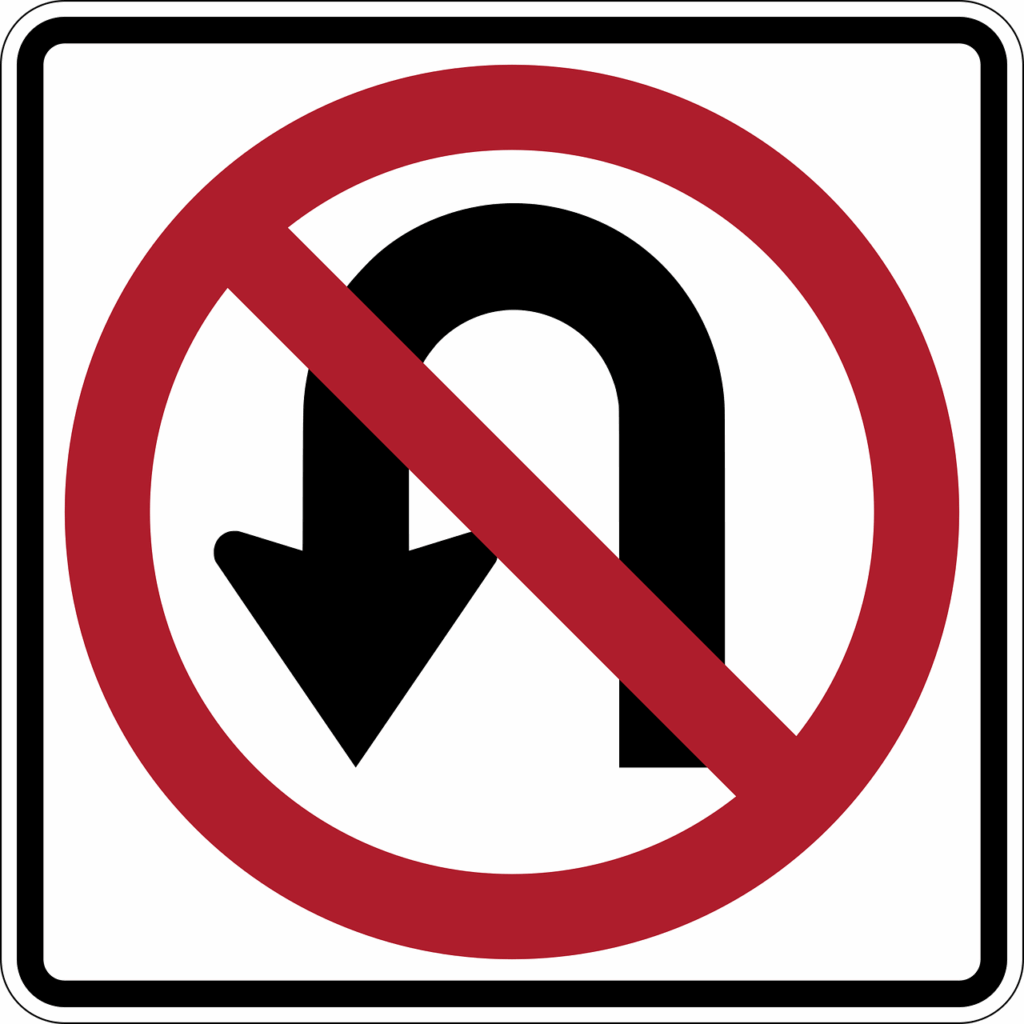
3. **Executing the Pull-In**Once your pre-maneuver setup is complete, the actual execution of pulling into a tight space requires careful, controlled movements. With your turn signal still active, indicating your intention to other drivers, turn your steering wheel toward the space you want to park in and slowly begin pulling in. Your turn signal will likely turn itself off soon as you continue turning the wheel, but it has already served its crucial purpose of alerting others.
As you drive forward into the parking space, continue turning the wheel, guiding your vehicle smoothly into the spot. It is essential to take your time and pull in slowly, always being extra cautious when parking in small, narrow spaces. Rushing this stage can lead to misjudgments and potential contact with adjacent vehicles or obstacles. Maintaining a slow speed allows for small, precise adjustments as you progress.
Consider the position of neighboring vehicles when finalizing your placement. If there is a vehicle parked in the space next to the driver side of your car and that vehicle is extremely close to the line between parking spaces, it’s a smart strategy to park your car closer to the opposite side of your parking space. This thoughtful positioning will leave more room on the driver’s side so that you can safely open your door without hitting the other vehicle when getting out of your car. Conversely, if the vehicles parked on either side of you are positioned in the center of their spaces, then you can also park your car comfortably in the middle of your spot rather than excessively favoring one side.
Once you are parallel to the vehicles or spaces next to yours and fully within the parking boundaries, straighten up your steering wheel. Ensuring your steering wheel is straightened back into its original position is vital not just for aesthetic alignment but also for practical reasons, as it will make it easier to back out of the space later when you leave. Continue to pull forward slowly until your vehicle is all the way in the parking space, then gently apply the brake. If there is a vehicle parked directly in front of your space, be careful not to bump it as you pull all the way in.
Finally, put your car in park and turn off the ignition. As you exit the vehicle, remember to take caution when opening your door. In small parking spaces, there is not always enough room to open your car door all the way without hitting the vehicle next to yours. A mindful exit completes the successful tight-space parking maneuver.
4. **Mastering Backing Out**Successfully navigating into a tight parking space is only half the battle; backing out requires an equal measure of caution and skill. Before shifting into reverse, it’s crucial to perform a thorough check of your surroundings. Check your rearview mirror and look behind your vehicle to ensure there are no pedestrians walking past and that no other vehicles are in the way. This comprehensive scan minimizes the risk of unforeseen obstacles.
If you folded your side mirrors in when parking, it’s generally advisable to open them before reversing, provided you have enough room to do so without hitting adjacent vehicles. If you were able to open the side mirrors or if they were already open, check both to be sure the coast is clear before reversing. Maximizing your field of vision through properly adjusted mirrors is indispensable for a safe exit, as it helps you monitor all angles around your vehicle.
With your visual checks complete and the coast clear, put your vehicle in reverse and slowly begin backing up. The emphasis here is on ‘slowly.’ You will still need to continuously watch for pedestrians and other vehicles the entire time you are reversing out of the parking space. Maintaining a low speed gives you ample time to react to any unexpected movements or obstacles that may appear, preventing hasty decisions.
As you reverse, turn the steering wheel in the direction you want the rear of your vehicle to go. This intuitive steering input will guide your vehicle out of the spot. Remember to continue watching out for people and other vehicles as you back up, ensuring a clear path. Constant vigilance is the hallmark of a skilled driver, especially in confined areas where margins for error are slim.
Once your vehicle is all the way out of the parking spot, apply the brakes and straighten up the steering wheel. It’s important not to release the brakes immediately until you’ve fully straightened your wheel and are ready for the next step. This prevents your vehicle from accidentally rolling further backward once you are completely clear of the parking space. If you couldn’t open your side mirrors prior to backing out, now is the time to unfold them. Finally, put your vehicle in drive, release the brake, and slowly drive forward. With these steps, you have now successfully pulled into and backed out of a small parking space, demonstrating complete control.
Read more about: Mechanics’ Top Frustrations: 14 Bad Car Habits You Need to Stop Now to Save Money and Your Vehicle’s Life
5. **Advanced Maneuvering Techniques**When faced with particularly challenging tight spaces, conventional forward or reverse parking might not suffice, necessitating the use of more advanced maneuvering techniques. In any tight parking situation, precision and control are paramount. Before beginning the maneuver, always ensure your mirrors are properly adjusted to maximize visibility on all sides of the vehicle, reducing blind spots and enhancing your spatial awareness. Use slow, deliberate movements to minimize the risk of scraping or bumping adjacent vehicles or obstacles; haste is the enemy of accuracy in tight spots.
For backing into a space, begin by positioning your car parallel to the space you intend to park in, leaving about two to three feet between your vehicle and the parked cars or boundaries. This carefully chosen distance provides enough room to maneuver without risking contact and sets the stage for a smooth entry. When backing into the space, turn your steering wheel sharply toward the curb or parking boundary once your rear wheel aligns with the edge of the parking space. Continue reversing slowly while checking all mirrors and the rearview camera if available, adjusting your steering angle as needed to align your vehicle precisely within the space.
If the space is particularly tight or presents an awkward angle, consider employing specialized techniques. The “Three-Point Turn” Method is invaluable if you cannot back in directly. This involves pulling forward past the space, then reversing while steering sharply to angle the car into the spot. Another useful technique is the “Rocking” Technique: if you find yourself stuck mid-maneuver, alternate between forward and reverse movements to inch your car into position with small, controlled movements. These methods provide flexibility when a straightforward approach isn’t feasible.
Modern vehicle technology can also be a significant ally. Leverage Parking Sensors and Cameras, as these assist in judging distances and angles that may be difficult to see directly, providing crucial feedback to prevent collisions. Throughout any advanced maneuver, maintain a slow speed and be ready to stop at any moment to reassess the position. This proactive approach ensures you retain full control and can correct your course before any damage occurs, turning a difficult situation into a manageable one.
Read more about: Don’t Waste Your Money: 14 Walmart Buys That Experts Say to Skip (and What to Choose Instead)
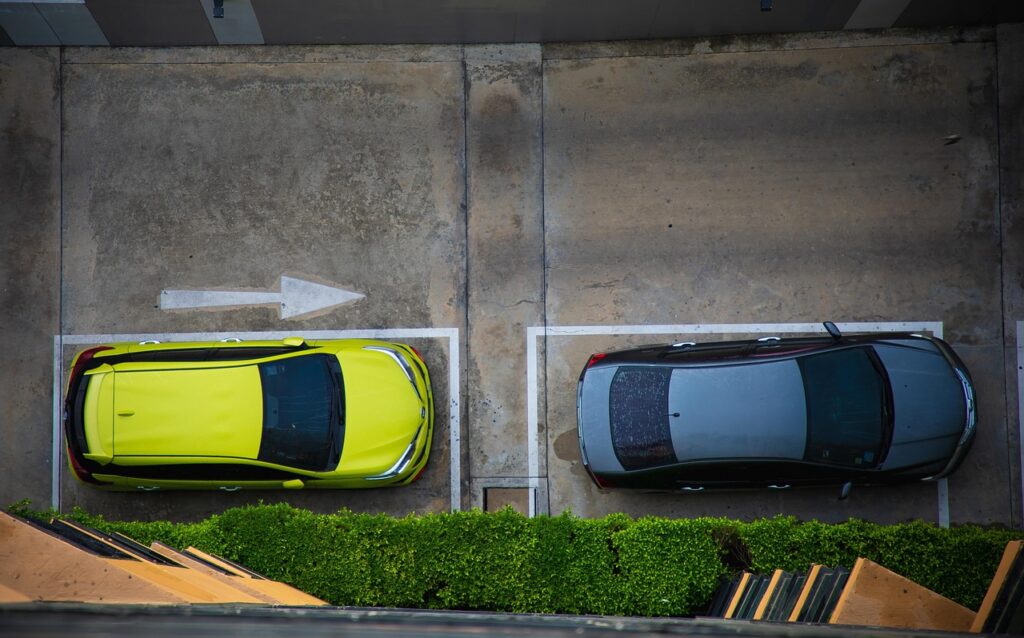
6. **Overcoming Common Parking Challenges**Parking in tight spaces inevitably presents several obstacles that can challenge even experienced drivers, but with the right strategies, these can be effectively overcome. The primary challenges often include limited visibility, navigating narrow clearance, and handling the pressure from other drivers. Addressing these effectively improves your success rate and significantly reduces stress, making the entire parking process more manageable.
Limited visibility is a frequent culprit for parking woes, but it can be mitigated through several practical steps. Start by adjusting your side and rearview mirrors to minimize blind spots, giving you the broadest possible view of your surroundings. Furthermore, modern technology offers powerful aids; utilizing features such as rearview cameras and parking sensors provides additional eyes and audible alerts, significantly enhancing your perception of unseen areas. In particularly tricky situations, don’t hesitate to ask a passenger or a trustworthy bystander to guide you, providing real-time feedback that can be invaluable.
Narrow clearance demands precise control of the steering wheel and careful measurement of distances. To master this, develop the habit of using reference points on your vehicle, such as side mirrors or door handles, to accurately gauge your proximity to obstacles. These personal markers help you understand your vehicle’s footprint in tight confines, allowing for more confident and precise adjustments. It’s about developing a keen spatial awareness that minimizes the risk of scrapes and bumps, ensuring you keep your vehicle pristine.
Finally, the pressure from other drivers, often in busy parking lots or on crowded streets, can cause rushed decisions and mistakes. To counteract this, maintain a calm and assertive demeanor. Signal your intent early to alert others to your parking maneuver, allowing them to adjust their movements accordingly. More importantly, remain calm and take your time; a few extra seconds spent parking safely are always better than rushing into an accident. If necessary, and if the situation allows for it safely, exit the vehicle briefly to better assess the space and your vehicle’s position. This strategic pause can provide a fresh perspective and alleviate immediate pressure, leading to a more successful outcome.
Read more about: NHTSA Intensifies Scrutiny of Tesla: Unpacking Safety Concerns from Faulty Door Handles to Advanced Driver-Assistance Systems

7. **Essential Tips for Mastering Precision**Consistent practice and adopting a systematic approach are truly the cornerstones of mastering parking in tight spaces. Precision hinges on your ability to control every aspect of your vehicle’s movement, allowing for even the smallest adjustments. Always begin by approaching any parking space at a slow speed, giving yourself ample time to observe, react, and make those critical corrections that can mean the difference between a perfect park and a frustrating scrape. This deliberate pace is your best ally in maintaining control.
To further enhance your accuracy, develop the habit of using fixed landmarks within the environment as reliable guides. Whether it’s the curb, painted lines on the asphalt, or nearby poles, these stationary markers offer invaluable reference points for judging your vehicle’s position. Furthermore, don’t shy away from practicing different parking angles in a safe, low-traffic environment. This varied practice builds muscle memory and confidence, equipping you to tackle unexpected situations with greater ease and familiarity.
Optimal control also comes from maintaining a proper grip on your steering wheel. Keeping your hands at the 9 and 3 o’clock positions provides maximum leverage and responsiveness, allowing for smoother and more precise steering inputs. Finally, before you even think about exiting your vehicle, always ensure it is centered and perfectly straight within the parking space. This not only presents a tidy appearance but also makes departing the space much easier later on, preventing unnecessary maneuvering when you’re ready to leave.
Effective precision in tight parking is a blend of awareness and action. Properly adjusting your mirrors maximizes visibility, effectively reducing blind spots and the risk of collision. Approaching slowly allows crucial time for corrections, directly improving accuracy and control. Leveraging technology aids, such as sensors and cameras, significantly enhances your spatial awareness, making parking both safer and notably easier. Regular practice is paramount for building skill and confidence, directly reducing the anxiety often associated with tight spots. Ultimately, consistently using reference points helps you judge distances precisely, ensuring your vehicle aligns correctly every time.
Read more about: An Outdoor Survival Master’s Secret Toolkit: Unpacking the 11 Essential Wilderness Lifelines
8. **Assessing Space and Vehicle Dimensions**Before even attempting to slide your vehicle into a tight spot, a critical first step is to thoroughly evaluate both the available parking space and your vehicle’s specific dimensions. This crucial assessment isn’t just a recommendation; it’s a vital preventative measure that helps in meticulously planning your maneuver and, most importantly, in avoiding potential damage to your car or surrounding property. A quick, honest appraisal can save you significant time, stress, and repair costs down the line.
When you’re eyeing a potential spot, several factors demand your attention. Start by considering the space’s length, ensuring it is at least 1 to 2 feet longer than your vehicle to provide sufficient room for comfortable maneuvering. Equally important is the space’s width; you need enough lateral clearance not only to avoid hitting obstacles but also to comfortably open your doors once parked. Always identify any fixed obstructions such as curbs, poles, walls, or other vehicles that could restrict your movement or present a contact risk.
Beyond the physical boundaries, don’t overlook the surface conditions of the parking area. Uneven ground, subtle slopes, or slippery surfaces can significantly affect your vehicle’s control and stability during a maneuver. Acknowledging these conditions upfront allows you to anticipate challenges and adjust your approach accordingly, maintaining optimal control throughout the parking process. Being aware of these environmental factors adds another layer to your precise parking strategy.
Understanding typical vehicle dimensions and recommended clearances is also incredibly insightful for tight parking scenarios. For instance, a compact car, typically 13 to 15 feet long and 5.5 to 6 feet wide, generally requires 1 to 2 feet of clearance in both length and width. Sedans, measuring around 15 to 17 feet long and 6 to 6.5 feet wide, benefit from 2 to 3 feet of clearance. Larger vehicles like SUVs and crossovers, with lengths of 16 to 18 feet and widths of 6.5 to 7 feet, ideally need 3 to 4 feet of clearance in both directions to maneuver safely.
Executing the parking maneuver with precision then builds upon this foundation of assessment. It involves positioning your vehicle parallel to the space with 2 to 3 feet of clearance, signaling your intent early, and meticulously checking all mirrors and cameras. As you begin reversing slowly, steer into the space when your rear bumper aligns with the corner, making small adjustments as needed. The ultimate goal is to finalize your positioning with your vehicle centered and equal clearance on both sides, ensuring ample room to open doors and exit safely.
Read more about: Used Hybrid Battery Reliability: Decoding 10 Models – The Ones That Endure and the Ones That Don’t
9. **Leveraging Modern Parking Technology**In today’s automotive landscape, modern vehicles are often packed with an array of sophisticated features specifically engineered to make parking in even the tightest situations far more manageable. Leveraging these advanced tools isn’t just a convenience; it’s a smart strategy that can significantly enhance your precision and overall safety. These technological aids act as extra eyes and ears, providing invaluable feedback that traditional driving methods alone cannot offer.
Among the most widely adopted and beneficial technologies are rearview cameras. These cameras provide a crystal-clear, real-time view of the area directly behind your vehicle, displayed conveniently on your dashboard screen. This visual feed allows for far better judgment of distances and the identification of obstacles that might otherwise be in your blind spot, making reversing into a tight space less of a guessing game and more of a controlled operation. Paired with this are parking sensors, which emit audible alerts that intensify as your vehicle gets closer to an object, acting as an additional warning system to help prevent accidental collisions.
For those who want to take the stress out of parking entirely, some cars offer advanced automatic parking systems. These cutting-edge features can range from semi-automatic assistance, where the system controls steering while you manage the throttle and brakes, to fully automatic systems that handle the entire parking process. While not every vehicle comes equipped with this, for those that do, it can be an incredibly invaluable asset for navigating challenging parallel or perpendicular parking spots with remarkable ease and precision.
Even with all the technology, traditional tools remain vital. Properly adjusting your side mirrors before you even begin to enter a parking space is crucial for maximizing visibility of side clearances, ensuring you don’t inadvertently scrape against adjacent vehicles or walls. Additionally, practicing the hand-over-hand steering technique can lead to smoother and more precise turns, especially during complex backing maneuvers, giving you a greater sense of control and finesse.
When tackling very tight spaces, a few expert tips can make all the difference. Consistently practicing parking in similar challenging spaces will dramatically improve your familiarity with your vehicle’s turning radius and overall control. Always use landmarks—whether they are painted lines, curb edges, or nearby objects—as reliable fixed points to accurately gauge your positioning. Finally, always strive to keep your wheels straight once you’ve finalized your park; this not only reduces strain on your tires and suspension but also allows for a much easier departure. Above all, maintain calm and patience, as stress can often lead to rushed decisions and avoidable mistakes.
Read more about: What Happened to Them? A Deep Dive into 14 Iconic European and American Cars That Disappeared from Production

10. **Expert Insights for Mastery**To truly master the art of parking in tight spaces, it’s invaluable to consider the wisdom offered by seasoned driving professionals. Their insights distill years of experience into actionable advice that can elevate your parking prowess. As Jessica Lin, a Certified Driving Instructor at SafeDrive Academy, advises, the key to success begins with meticulous positioning: “When approaching a tight parking spot, the key is to position your vehicle parallel and slightly ahead of the space before beginning your turn. This alignment allows for better control and reduces the risk of scraping adjacent vehicles. Always use your mirrors and perform slow, incremental adjustments to ensure precision.” This highlights the importance of setup and deliberate action.
Dr. Marcus Feldman, an Ergonomics Specialist at the Automotive Research Institute, emphasizes the cognitive aspect of parking. He notes, “Spatial awareness is critical when parking in confined areas. Drivers should develop a mental map of their vehicle’s dimensions relative to the parking space. Utilizing reference points such as curb edges or painted lines can significantly improve accuracy and confidence during tight maneuvers.” His perspective underscores the need for drivers to internalize their vehicle’s footprint, making instinctual adjustments easier and more reliable.
Further reinforcing the synergy between human skill and technological assistance, Elena Torres, an Automotive Safety Analyst with the National Traffic Safety Board, offers a balanced view. She states, “Employing technology such as rearview cameras and parking sensors can greatly enhance safety and ease when parking in tight spots. However, drivers must not rely solely on these aids; combining technology with practiced skill and cautious judgment ensures the best outcomes in challenging parking scenarios.” This reminds us that while technology is a powerful tool, it complements, rather than replaces, a driver’s honed abilities.
These expert perspectives naturally lead to frequently asked questions from drivers seeking to improve their tight parking skills. Many wonder about the best technique; it consistently involves slow, controlled movements, effective use of mirrors and backup cameras (if available), and making small, precise steering adjustments. When assessing if a space is too tight, the advice is to measure or visually estimate your vehicle’s width and length against the spot, ensuring ample room to open doors and maneuver without risking damage. For optimal visibility, experts universally recommend using both side mirrors and rearview cameras, as they provide complementary views that enhance overall spatial awareness. Finally, to improve confidence, practice regularly in low-pressure environments, leverage parking aids, and always approach the space slowly to maintain full control of your vehicle, allowing you to build skill progressively and reduce anxiety.
Read more about: Unlock Your Brain’s Full Potential: 14 Science-Backed Habits to Outsmart ‘Brain Rot’ and Boost Your Cognitive Power

11. **Optimizing Your Home Garage for Parking**While much attention is given to parking in public spaces, many drivers face a unique and persistent challenge right at home: maneuvering their vehicles into a tight garage. It’s a daily ritual that can be incredibly frustrating, particularly when the garage, often used as a catch-all for decorations, bikes, and tools, becomes cluttered and restricts available space. Whether you drive a larger vehicle like a minivan or SUV, or even an average-sized car navigating poor lighting, existing clutter, or tricky structural elements like support beams, optimizing this private parking spot is a necessity.
Effective garage parking begins long before you even pull in. The first critical step is thorough Garage Preparation. Start by evaluating your sensors; double-check the functionality and placement of your garage door sensors, especially if you store items at the back. It’s essential that these are clear and working properly, as they determine whether your car can safely fit and the door can close. Measure your car against the garage space, and test if the door closes when your bumper is close to the sensor. If not, rearranging these sensors may be necessary to prevent accidental damage or incomplete closure.
Another fundamental preparation involves creating a clear mark on the garage floor or wall. Many drivers struggle with consistent positioning, inadvertently bumping into items or even the garage wall. By addressing any pathway blockages and establishing a visual marker on the walls, you ensure that your car pulls up to the required spot without issue. This simple yet effective guide helps standardize your parking, minimizing guesswork and potential damage. Furthermore, regularly check the garage door’s operational status; instantly attending to any malfunctioning components protects your vehicle and ensures the security of your belongings inside.
Once the garage is prepped, the actual process of parking in a narrow garage demands patience and practice. Begin by getting a realistic estimate of the available space on both sides of your vehicle. A smart starting tip is to park with your car mirrors closed initially; this protects them from brushing against walls and getting damaged. Once you gain confidence, you can try mastering the technique with mirrors out. It’s also highly beneficial to practice parking in a similar marked-out tight space in an open area, familiarizing yourself with the maneuvers before attempting them in the actual garage. Finally, if you’re still struggling, observe how others, perhaps a family member, manage to park in a tight garage, paying close attention to their maneuvering techniques.
Unfortunately, not having ample room for garage parking can lead to a host of problems. These potential home garage parking problems include body and paint damage to your car from accidental scrapes, significant inconveniences when trying to enter or leave the garage, the inability to enjoy the many benefits of garage parking such as security and weather protection, and, perhaps most acutely, the daily stress of struggling to park your car safely inside your own garage.
Read more about: Don’t Waste Your Cash: Understanding EV Battery Longevity and Replacement Realities
12. **Practical Solutions for Challenging Home Garage Parking**Moving beyond basic preparation and technique, there are several concrete solutions to address and permanently resolve challenging home garage parking problems. These options range from significant structural changes to clever DIY hacks and readily available technological aids, ensuring there’s a relevant fix for nearly every situation.
One of the most straightforward yet impactful solutions is to literally “Make the garage bigger.” Expanding the size of your garage eliminates the core problem of insufficient space. For a single car, a recommended size is 12 inches wide by 24 inches deep, while larger vehicles might need 16 inches by 24 inches to accommodate storage. For two cars, 22 inches by 24 inches provides good flexibility. However, while this solution has no drawbacks in terms of space, it comes with considerable additional costs, the inconvenience of not being able to use your garage during expansion, the resulting mess, and the hassle of acquiring necessary building permits.
If expanding isn’t feasible, the next best approach is to “Create more space in the garage” by tackling clutter. Most garages are underutilized in terms of vertical and wall space. By implementing effective garage storage solutions, such as cabinetry, shelving, and wall organizers, you can free up significant floor space. This intelligent organization can often create plenty of room for parking one or even two cars, depending on your garage’s initial size, transforming a crowded space into an efficient parking haven without structural changes.
For budget-friendly and immediate improvements, “Use DIY garage parking solutions.” These simple yet effective tricks can dramatically enhance your parking precision. Consider using thick sofa foam pads mounted on the walls at car door height to protect your mirrors and bodywork from accidental bumps. A wood block secured to the garage floor can serve as a perfect stopping indicator, signaling when you’ve pulled in far enough. Alternatively, a paintbrush attached to the driver-side wall, positioned to touch your mirror when you’ve reached the optimal stopping point, offers a tactile cue.
Beyond DIY, many “proper home garage parking solutions” are available commercially. Wireless car cameras, including rearview, backup, reverse, and parking cameras, can significantly aid visibility. Wireless parking sensors, often built into license plate frames, communicate with a smartphone app, providing audio, vibration, and visual alerts when your car approaches an object. Laser parking aids, mountable in the garage, project adjustable laser beams onto your car to guide safe parking. Additionally, floor indicators—such as stoppers, bumps, or mats—can be installed to physically guide your vehicle to the correct parking spot.
Finally, don’t underestimate the impact of “Add wall bumpers or lighting” and adjusting your parking routine. Many garages suffer from outdated or insufficient lighting; upgrading to modern LED lights can dramatically improve visibility, making parking easier and safer. PVC bumpers, mounted on garage walls or Slatwall panels, offer physical protection, saving your car from dents, scratches, or dings. If you’ve recently moved or acquired a new, larger vehicle, the problem might simply be a lack of familiarity. Practice parking in the tight garage space regularly, perhaps with a family member guiding you initially, to acclimatize to the new surroundings and confidently master your unique garage parking challenge.
Read more about: 12 New Cars Named ‘Best Buys’ for 2025: An Expert Guide for Savvy Shoppers
Parking in tight spaces, whether in a bustling urban lot or your own home garage, is a skill that epitomizes driving mastery. It demands a keen eye for detail, precise vehicle control, and the confidence to execute maneuvers thoughtfully. By embracing strategic assessment, leveraging modern technologies, and continuously refining your approach with expert insights and dedicated practice, you can transform what might seem like a daunting task into a smooth, efficient, and stress-free part of your daily driving routine. Remember, every successful park not only protects your vehicle but also enhances your overall driving competence, making you a more confident and capable driver on any road, in any space. Embrace the challenge, apply these proven techniques, and enjoy the satisfaction of parking like a true pro.

